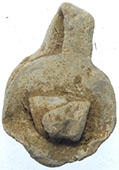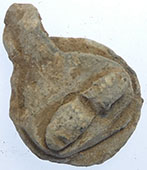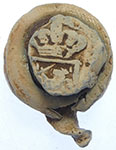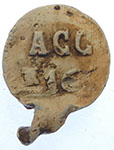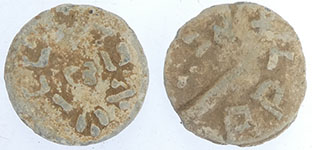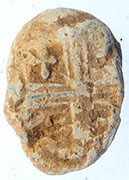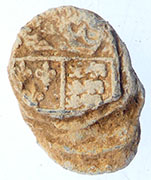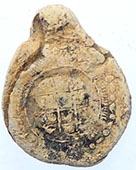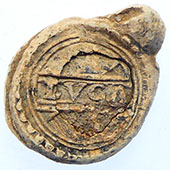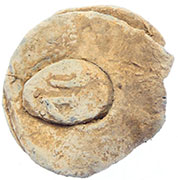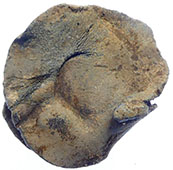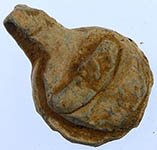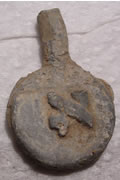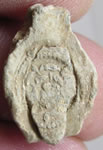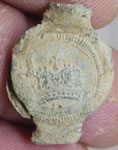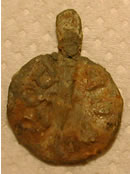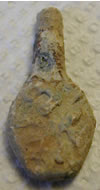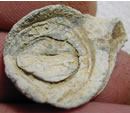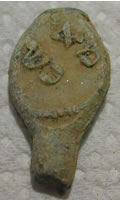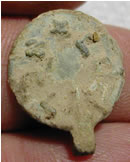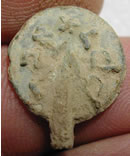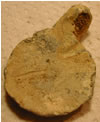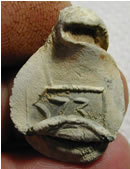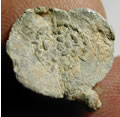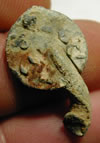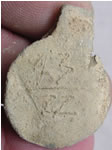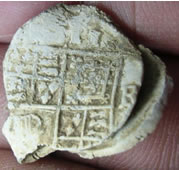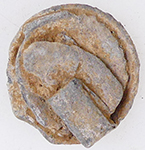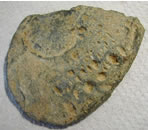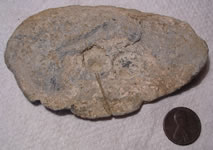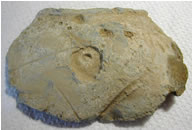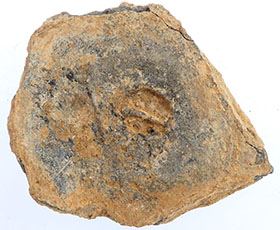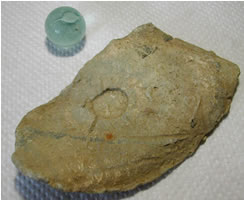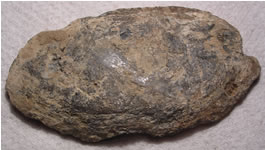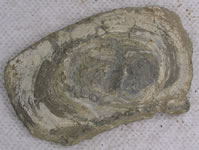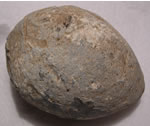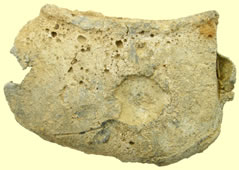

Metal detecting holidays in England with the World's most successful metal detecting club.20 years plus.
Twinned with Midwest Historical Research Society USA.
|
Lead cloth seals & Lead sewing equipement Lead seals such as cloth seals and bale seals were widely used in Europe between the 13th and 19th centuries as a means of identification and as a component of regulation and quality control. Cloth seals appear to be the most thoroughly documented type of seal. Cloth seals were typically two disc seals joined by a connecting strip. These were intended to be folded around each side of a textile and stamped closed, in a manner similar to that in which coins were stamped. Bale seals such were single disc seals, rather than two disc seals, and were also used to identify textiles, as well as parcels and bales of trade goods. The obverse would typically display a city's arms, and the reverse would record data such as the length or width of fabric or the weight of a parcel. Specialist literature - British Museum Occasional paper 93 - Lead cloth seal and related items in the British museum - Geoff Egan Alnage, or aulnage (from Fr. aune, ell) is the official supervision of the shape and quality of manufactured woollen cloth. It was first ordered in the reign of Richard I that "woollen cloths, wherever they are made, shall be of the same width, to wit, of two ells within the lists, and of the same goodness in the middle and sides." This ordinance is usually known as the Assize of Measures or the Assize of Cloth. Article 35 of Magna Carta re-enacted the Assize of Cloth, and in the reign of Edward I an official called an "alnager" was appointed to enforce it. His duty was to measure each piece of cloth, and to affix a stamp to show that it was of the necessary size and quality. As, however, the diversity of the wool and the importation of cloths of various sizes from abroad made it impossible to maintain any specific standard of width, the rules as to size were repealed in 1353. The increased growth of the woollen trade, and the introduction of new and lighter drapery in the reign of Elizabeth I, compelled a revision of the old standards. A statute was passed in 1665 creating the office of alnager of the new drapery, and defining the sizes to which cloth should be woven. The object of the statute was to prevent people being deceived by buying spurious woollen cloth, and to provide against fraud and imposition. Owing to the introduction of the alternative standard, a distinction arose between "broadcloth" (cloth of two yards) and "streit" or "strait" (narrow cloth of one yard). The meaning now attached to broadcloth, however, is merely that of material of superior quality. Alnage duties and the office of alnager were abolished in 1699.
Cloth seals were usually two discs (occasionally four) joined by a thin strip. One disc had a rivet, the other a hole. The discs were folded together over the edge of the cloth, and hammered together with a die, which imprinted information onto the lead disc. It’s the intricate designs on so many of the cloth seals which make them appealing. These can include the date and region of production or inspection, touchingly personal maker’s marks or symbols indicating alnage. The latter included heads of royalty, the crown, coats of arms, griffins or lions rampart. Alnage was abandoned in 1724 and sealing was abolished in 1889.
|
|||
Complete Post medieval lead alange cloth seal |
|||
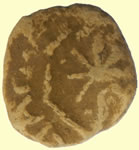 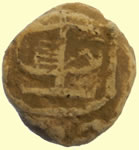 |
  |
||
 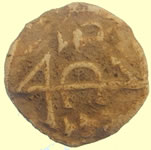 |
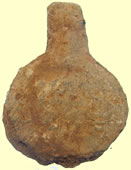  |
||
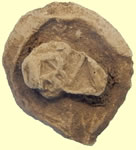 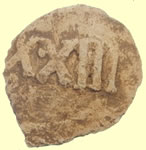 |
  |
||
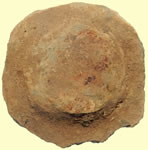 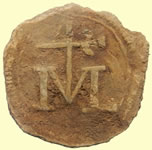 |
  |
||
  |
  |
||
 |
 |
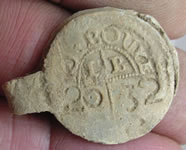 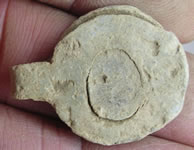 |
|
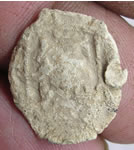 |
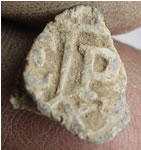 |
  |
|
 |
 |
  |
|
  |
|||
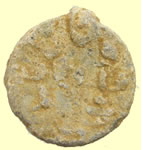 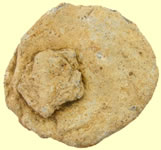 |
  |
||
  |
  |
||
 |
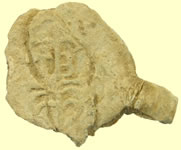 |
  |
|
 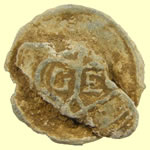  |
  |
||
  |
 |
||
|
|||
|
|
|||
  |
|||
|
Complete and mint condition cloth seal, double B's with crown. Used in the town of Bocholt in Germany during the reign of Charles II(x) taken from Lead Cloth seals at the BM book another opinion expressed 'this
has nothing to do with Bocholt as BB is not the sign of Bocholt, but
stands for Bombasine als textile quality |
|||
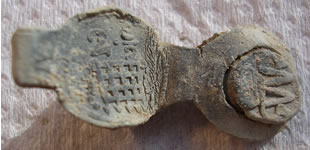 |
|||
|
Possible
Queen Anne 1704 lead Alnage seal with portcullis and duty paid symbol
|
|||
  |
|||
17thC Commonwealth lead cloth seal |
|||
Lead sewing palm guards |
|||
|
English: A lead cast palm guard of Post-Medieval to Modern date, used for leather working. The guard is of a crude semicircular shape and is concave with a ridge or rim along the outer straighter edge. In the centre of the outer surface is a slight circular depression, of the type commonly found on the surface of palm guards. All of the outer edges are irregular. For similar examples see Bailey, G. 2001, (p.64-5). There are currently twelve similar artefact records on the Portable Antiquities Scheme database, search under 'palm guard' in the description field. These twelve are PAS record numbers CAM-7C9CF2, CORN-2E0AF4, CORN-D8C630, CORN-D88811, DEV-C89F67, DEV-C7F0A5, LEIC-29C010, HAMP-6163F3, LVPL-995511, SUR-726017, SUR-B5D907 and WMID-07FF87.
Sewing and bodkin needles new page
|
|||
 |
|||












